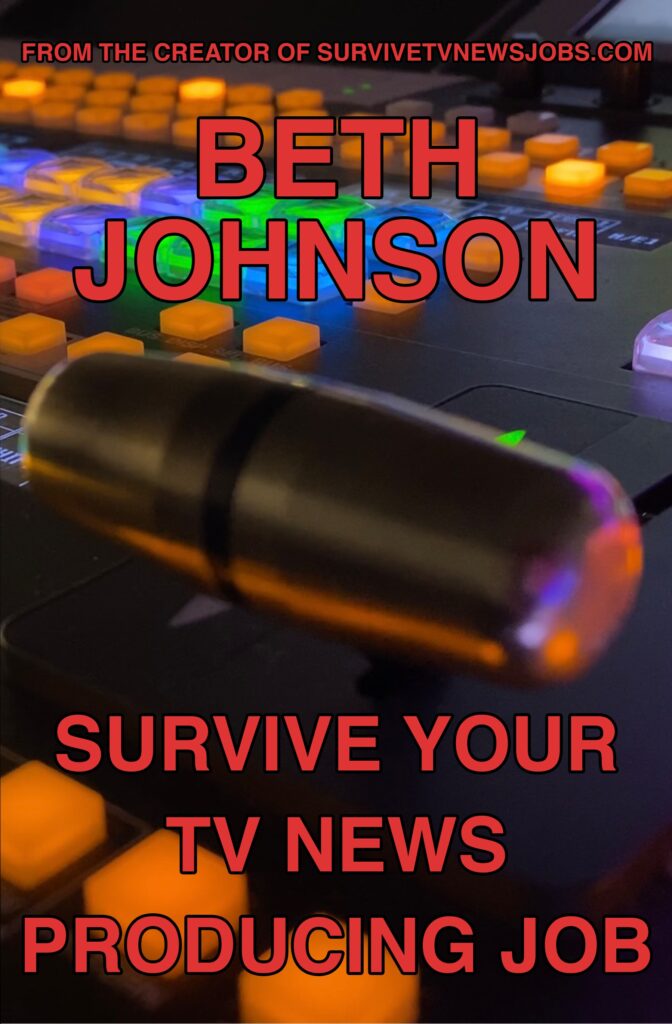This is a million dollar question in a lot of ways: How do I figure out what should be in a TV story vs a digital story? There are teams of researchers, consulting groups, and higher ups in the broadcast industry weighing this question every day. But you are a journalist, and you have to turn stories everyday right now while they ponder the future digital universe. So let’s lay out some common sense ground rules.
Necessary TV Elements:
Wide Impact
Strong visual and/or emotional elements
DMA Impact
Timeliness, especially if ongoing
Necessary Digital Elements:
Immediacy
Impact
Strong visual and/or emotional elements
Great Why or How elements
Great extra nuggets of information surrounding ongoing story
These lists look awfully similar right? The key differences are subtle but important.
Let’s jump into the TV elements list first. Wide Impact tops the list for a big reason, TV viewers are getting more finicky. We used to be able to just grab hyper local elements to fill up our local news sections and be fine. Not as easy now though. Viewers are likely two screening when watching TV so if a story or two bores them, you lost them to the other screen! So while remaining largely local, the story has to impact a lot of people. Let’s discuss the meaning of impact. That doesn’t mean a direct effect on the person watching necessarily. It can also mean a strong universal type tie. Think heartbreaking stories. My family isn’t impacted, but I sure care about the other family. Or I sit and thank my lucky starts that’s not my family. Just getting nitty gritty here. That’s why emotional elements are so crucial.
TV news needs strong visuals in its stories. The goal is for every story. That’s not always realistic, but try as much as possible. Especially in this day of big monitors and telestrations and 2d graphics. Discussing the visual impact of the story is as big as the community impact when considering a TV news story.
DMA impact is a little different but very key. There are times especially if you are the third or fourth place station that you want to cater to an underserved audience in your DMA. This helps serve the community better as journalists, and can help bring up ratings. These are important discussions to have to make sure TV stories are truly considering the entire audience, not just a chosen few. (Which can get into the whole idea of not just choosing stories you personally care about to cover. Your opinion is one opinion. Never forget that as a journalist.)
Timeliness is also very important. But this is going to sound half crazy to some, it needs to emphasize more developing type stories, instead of just breaking news. Why? Because digital does breaking news better unless it is a HUGE event in which you are in continuous coverage. Admit that and you will start to produce more relevant stories for your viewers. It is too hard for TV to beat digital. Breaking news desks need to cater to digital first. But you cannot put clearly dated stories into newscasts. That’s where strong data driven journalism is starting to come into play. You have started hearing broadcast groups mention that they want to focus on hard hitting investigative journalism locally. That’s smart. That’s going to provide the key information that will drive audiences to a TV newscast. I want to see that reporter I trust spell it out for me. Then I can research more and see if I agree. That’s what journalism was about for a long time. But TV news went too heavy into pictures and immediacy and not enough into impact. That’s what hurt TV. It’s time to go back to the basics, with a little more showcasing savvy than TV news of the 80’s for example.
Now the digital list. Immediacy is first for obvious reasons. You check your phone to see what’s happening right now. What if I missed something? Due to content constantly changing people are constantly checking. That doesn’t change for local news. You have to have new elements all the time that make sense. Immediacy.
Impact is next. Just grabbing breaking news from all over the world will not impress local audiences. Research shows this for TV viewers and it is not different for internet users for local TV news websites. I promise you do not do it as well as HuffPost/Politico etc. Focus on what the audience wants. Local stories that could make a difference for them or someone they know.
Strong visual and/or emotional elements. Think Instagram mentality here. You go on the app thinking you have 15 minutes to burn and an hour later, you are still looking at posts. Same with Pinterest. Give them great information they can relate to and suck them in with a great image or video. The human brain cannot resist.
Great why and/or how elements are crucial too. It can be really hard to catch everything stated on TV. Consumers are grabbing their phones, starved for more information. They can read the digital story more than once. They can highlight words and research more things. They can really get into the nitty gritty of stories and subject matter they want to understand. This is where we journalists can inform, teach and frankly be relevant again. Give them the facts they crave. Delve into what so many feel is so hard to get right now, understanding.
Sometimes that understanding is a whole series of special reports. Sometimes it is simply the last element of our digital story list: extra nuggets of information on a developing story. This is especially true if your next newscast is not for hours. Keep covering the most relevant stories. Add elements, even a few lines with an updated time stamp under the byline. It helps you get more clicks, more loyalty and more impact. And extra nuggets are usually easy to find and explain. These often become the old “water cooler” elements that people want to share with friends and coworkers. Especially now that everyone wants to show they are in the know and frankly relevant themselves. The psychological draws of digital are crucial to consider throughout your story selection process.
Hopefully these guidelines will make your day to day job a little easier while the big wigs duke it out over who has the big answer to digital.



